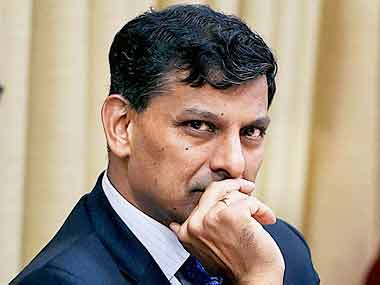Hours after US Federal Reserve chief Janet Yellen decided not to raise interest rates for now, Reserve Bank of India (RBI) Governor Raghuram Rajan sent out a strong message to those in the government and business rooting for an interest rate cut in India. True to his style, Rajan did not mince words and explained in detail why he believed sustainable growth needed a lot more than “quick fixes” such as interest rate cuts and tax giveaways to certain sectors.
“We need the understanding and cooperation of the business community, not impatience and pressure for quick impossible fixes,” the academic-turned-central banker said while delivering the fourth C K Prahalad memorial lecture at a CII event here on Friday. Rajan, who will hold the next monetary policy review meeting on September 29, said RBI would continue to focus on its own path on the fight against inflation, regardless of the Fed’s decision.
He also made a key distinction between the interests of the “vocal borrower” and the “silent saver”. “For us at RBI, the key task is to keep inflation low – not just today but well into the future, so that we get nominal modest rates that satisfy not just very vocal borrowers but also the silent saver.”
Rajan said the 3.6 per cent Consumer Price Index-based retail inflation in August was largely due to the base effect, excluding which it would be around 5.5 per cent. “The differential between WPI (Wholesale Price Index) and CPI is a source of problem. We have to be careful while pursuing growth and have to make it sustainable,” he added. In August, WPI-based inflation was in negative territory for a 10th straight month, at a historic low of -4.95 per cent.
Pressing his point further, the governor asked everyone to learn from the case of Brazil, an economy that was delivering impressive annual growth of around seven per cent till a few years ago but was now likely to shrink about three per cent. Brazil’s central bank was “pressed to lower rates”, fuelling a credit spree that overburdened customers are now struggling to pay, he said. “Brazil tried to grow too fast. They were forced to reduce credit cost. The takeaway lesson is, it is possible to grow fast with stimulus and rate cuts, only to pay the price later through high inflation,” he said, adding, “Brazil might have overspent and China might have over-invested.”
He also put the ball in the government’s court, saying reforms (not rates) held the key to India’s sustainable growth. “We have to expand the sustainable growth potential. That means continuing to implement reforms that the government and regulators have announced. That is the only way to get sustainable growth potential up.”
Rajan said while fellow BRICS (Brazil, Russia, India, China and South Africa) nations were in distress, India seemed to be an “island of tranquillity”.
The Fed’s decision, he said, was probably driven by rising global uncertainties. “If we look around the world today, it doesn’t present a pretty picture. Industrial countries are still struggling, with a few exceptions, to grow and the uncertainty about growth in the US and the world is probably what impelled the Fed to stay on hold.”
He, however, maintained the stance that RBI would cut rates only when there was room to do so. “We have noted the Fed decision. Clearly, market somewhat benignly reacted, certainly towards us. What we need to do is continue doing what we are doing, which anyway is the intention, regardless of the Fed,” Rajan said.




